Chevrolet Silverado 2500HD 2007 Owner's Manual
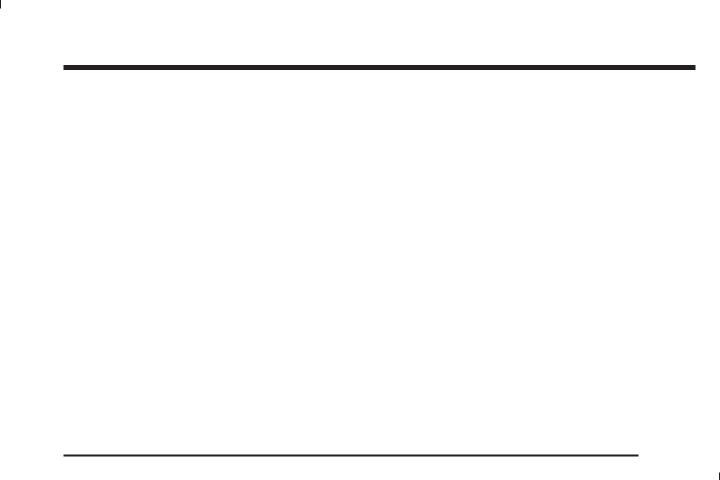
2007 Chevrolet Silverado Owner Manual M
Seats and Restraint Systems ....................... |
7 |
Front Seats .............................................. |
9 |
Rear Seats ............................................. |
20 |
Safety Belts ............................................ |
22 |
Child Restraints ...................................... |
46 |
Airbag System ........................................ |
89 |
Restraint System Check ....................... |
112 |
Features and Controls .............................. |
115 |
Keys ..................................................... |
117 |
Doors and Locks .................................. |
125 |
Windows ............................................... |
131 |
Theft-Deterrent Systems ....................... |
135 |
Starting and Operating Your Vehicle |
..... 139 |
Mirrors .................................................. |
175 |
OnStar® System ................................... |
185 |
Universal Home Remote System .......... |
188 |
Storage Areas ...................................... |
201 |
Sunroof ................................................ |
205 |
Instrument Panel ....................................... |
209 |
Instrument Panel Overview ................... |
212 |
Climate Controls ................................... |
240 |
Warning Lights, Gages, and Indicators |
.... 252 |
Driver Information Center (DIC) ............ |
273 |
Audio System(s) ................................... |
306 |
Driving Your Vehicle ................................. |
377 |
Your Driving, the Road, and |
|
Your Vehicle ..................................... |
378 |
Towing ................................................. |
443 |
Service and Appearance Care .................. |
491 |
Service ................................................. |
494 |
Fuel ...................................................... |
496 |
Checking Things Under the Hood ......... |
504 |
Rear Axle ............................................. |
546 |
Four-Wheel Drive .................................. |
548 |
Front Axle ............................................ |
550 |
Noise Control System ........................... |
551 |
1

Bulb Replacement ................................ |
552 |
Maintenance Schedule .............................. |
|
629 |
|
Windshield Wiper Blade Replacement |
.... 557 |
Maintenance Schedule .......................... |
|
630 |
|
Tires ..................................................... |
558 |
Customer Assistance Information |
|
651 |
|
Appearance Care |
607 |
|
|||
Customer Assistance and Information |
... |
652 |
|||
Vehicle Identification |
616 |
||||
Reporting Safety Defects |
|
667 |
|||
Electrical System |
617 |
|
|||
Vehicle Data Recording and Privacy |
..... |
670 |
|||
Capacities and Specifications |
626 |
||||
Index |
|
673 |
|||
|
|
|
2

GENERAL MOTORS, GM, the GM Emblem, CHEVROLET, the CHEVROLET Emblem, and the names SILVERADO and Z71 are registered trademarks of General Motors Corporation.
This manual includes the latest information at the time it was printed. We reserve the right to make changes after that time without further
notice. For vehicles first sold in Canada, substitute the name “General Motors of Canada Limited”
for Chevrolet Motor Division whenever it appears in this manual.
This manual describes features that may be available in this model, but your vehicle may not have all of them. For example, more than one entertainment system may be offered or your vehicle may have been ordered without a front passenger or rear seats.
Keep this manual in the vehicle for quick reference.
Canadian Owners
A French language copy of this manual can be obtained from your dealer/retailer or from:
Helm, Incorporated
P.O. Box 07130
Detroit, MI 48207
Litho in U.S.A. |
© 2006 General Motors Corporation. All Rights Reserved. |
Part No. 25817255 A Second Printing |
3
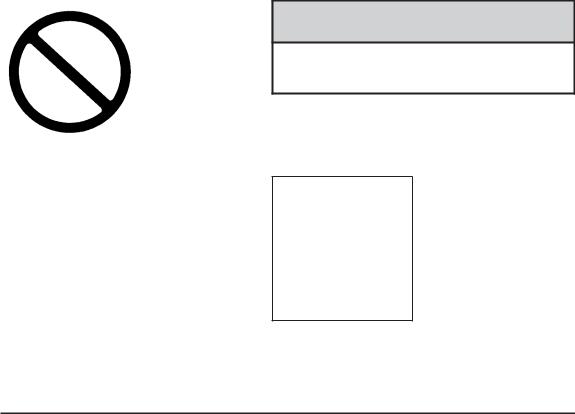
How to Use This Manual
Many people read the owner manual from beginning to end when they first receive their new vehicle. If this is done, it can help you learn about the features and controls for the vehicle. Pictures and words work together in the
owner manual to explain things.
If your vehicle has the DURAMAX® Diesel engine, refer to the DURAMAX® Diesel supplement for additional and specific information on this engine.
Index
A good place to quickly locate information about the vehicle is the Index in the back of the manual. It is an alphabetical list of what is in the manual and the page number where it can be found.
Safety Warnings and Symbols
There are a number of safety cautions in this book. A box with the word CAUTION is used to tell about things that could hurt you or others if you were to ignore the warning.
{CAUTION:
These mean there is something that could hurt you or other people.
We tell you what the hazard is and what to do to help avoid or reduce the hazard. Please read these cautions. If you do not, you or others could be hurt.
A circle with a slash through it is a safety symbol which means “Do Not,” “Do Not
do this” or “Do Not let this happen.”
4

Vehicle Damage Warnings
You will also find notices in this manual.
Notice: These mean there is something that could damage your vehicle.
A notice tells about something that can damage the vehicle. Many times, this damage would not be covered by your vehicle’s warranty, and it could be costly. The notice tells what to do to help avoid the damage.
When you read other manuals, you might see CAUTION and NOTICE warnings in different colors or in different words.
There are also warning labels on the vehicle which use the same words, CAUTION or NOTICE.
Vehicle Symbols
The vehicle has components and labels that use symbols instead of text. Symbols are shown along with the text describing the operation or information relating to a specific component, control, message, gage, or indicator.
If you need help figuring out a specific name of a component, gage, or indicator, reference the following topics:
•Seats and Restraint Systems in Section 1
•Features and Controls in Section 2
•Instrument Panel Overview in Section 3
•Climate Controls in Section 3
•Warning Lights, Gages, and Indicators in Section 3
•Audio System(s) in Section 3
•Engine Compartment Overview in Section 5
5
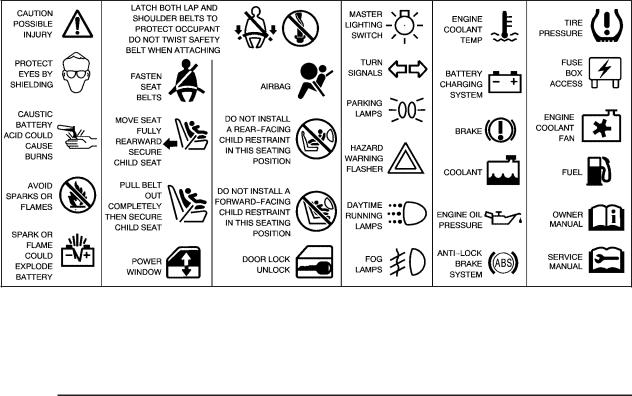
These are some examples of symbols that may be found on the vehicle:
6

Section 1 Seats and Restraint Systems
Front Seats ..................................................... |
9 |
Manual Seats ................................................ |
9 |
Power Seats ............................................... |
10 |
Manual Lumbar ........................................... |
11 |
Power Lumbar ............................................. |
11 |
Heated Seats .............................................. |
12 |
Memory Seat, Mirrors, and Pedals .............. |
13 |
Reclining Seatbacks .................................... |
15 |
Head Restraints .......................................... |
18 |
Seatback Latches ........................................ |
19 |
Center Seat ................................................ |
19 |
Rear Seats .................................................... |
20 |
Rear Seat Operation (Full Bench) ............... |
20 |
Rear Seat Operation (Split Bench) .............. |
21 |
Safety Belts .................................................. |
22 |
Safety Belts: They Are for Everyone ........... |
22 |
Questions and Answers About |
|
Safety Belts ............................................. |
26 |
How to Wear Safety Belts Properly ............. |
27 |
Driver Position ............................................. |
28 |
Shoulder Belt Height Adjustment ................. |
35 |
Safety Belt Use During Pregnancy .............. |
36 |
Right Front Passenger Position ................... |
37 |
Center Front Passenger Position |
|
(Regular Cab) .......................................... |
37 |
Center Front Passenger Position |
|
(Crew and Extended Cab) ....................... |
38 |
Rear Seat Passengers ................................ |
39 |
Rear Safety Belt Comfort Guides ................ |
42 |
Safety Belt Pretensioners ............................ |
45 |
Safety Belt Extender ................................... |
45 |
Child Restraints ............................................ |
46 |
Older Children ............................................. |
46 |
Infants and Young Children ......................... |
49 |
Child Restraint Systems .............................. |
53 |
Where to Put the Restraint .......................... |
58 |
Lower Anchors and Tethers for |
|
Children (LATCH) .................................... |
60 |
Securing a Child Restraint in a |
|
Rear Seat Position ................................... |
72 |
Securing a Child Restraint in the Center |
|
Front Seat Position .................................. |
74 |
Securing a Child Restraint in the |
|
Right Front Seat Position |
|
(With Airbag Off Switch) .......................... |
75 |
7

Section 1 |
Seats and Restraint Systems |
|
||
|
|
|
|
|
Securing a Child Restraint in the Right |
|
What Will You See After an Airbag |
|
|
Front Seat Position (With Passenger |
|
Inflates? ................................................... |
98 |
|
Sensing System) ...................................... |
|
81 |
Airbag Off Switch ...................................... |
100 |
Securing a Child Restraint in the Right |
|
Passenger Sensing System ....................... |
103 |
|
Front Seat Position (Heavy Duty |
|
|
Servicing Your Airbag-Equipped Vehicle .... |
110 |
Crew Cab Only) ....................................... |
|
85 |
Adding Equipment to Your |
|
Airbag System .............................................. |
|
89 |
Airbag-Equipped Vehicle ........................ |
111 |
Where Are the Airbags? .............................. |
|
92 |
Restraint System Check ............................. |
112 |
When Should an Airbag Inflate? .................. |
|
95 |
Checking the Restraint Systems ................ |
112 |
What Makes an Airbag Inflate? ................... |
|
97 |
Replacing Restraint System Parts After |
|
How Does an Airbag Restrain? ................... |
|
98 |
a Crash ................................................. |
113 |
8

Front Seats
Manual Seats
{CAUTION:
You can lose control of the vehicle if you try to adjust a manual driver’s seat while the vehicle is moving. The sudden movement could startle and confuse you, or make you push a pedal when you do not want to. Adjust the driver’s seat only when the vehicle is not moving.
To move a manual seat forward or rearward:
1. Lift the bar to unlock the seat.
2. Slide the seat to the desired position and release the bar.
Try to move the seat with your body to be sure the seat is locked in place.
9

Power Seats
Driver’s Seat with Power Seat Control, Power Recline, and Power Lumbar shown
On a vehicle with power seats, the controls used to operate them are located on the outboard side of the seats.
To adjust the seat, do any of the following:
•Move the seat forward or rearward by sliding the control forward or rearward.
•Raise or lower the front part of the seat cushion by moving the front of the control up or down.
•Raise or lower the rear part of the seat cushion by moving the rear of the control up or down.
•Raise or lower the entire seat by moving the entire control up or down.
On seats with power reclining seatbacks, the control is located behind the power seat control on the outboard side of the seats. See “Power Reclining Seatbacks” under Reclining Seatbacks on page 15.
A vehicle with a memory function allows seat settings to be saved and recalled. See Memory Seat, Mirrors, and Pedals on page 13 for
more information.
10

Manual Lumbar |
|
Power Lumbar |
|
|
|
|
|
|
If your vehicle has this feature, the knob is located on the front of the driver seat lower cushion on the outboard side. Turn the knob forward to increase, and rearward to decrease lumbar support.
If the seats have power lumbar, the controls used to operate this feature are located on the outboard side of the seats.
•To increase lumbar support, press and hold the front of the control.
•To decrease lumbar support, press and hold the rear of the control.
•To raise the height of the lumbar support, press and hold the top of the control.
•To lower the height of the lumbar support, press and hold the bottom of the control.
11

Release the control when the lower seatback reaches the desired level of lumbar support.
Your vehicle may have a memory function which allows seat settings to be saved and recalled. See Memory Seat, Mirrors, and Pedals on page 13 for more information.
Keep in mind that as your seating position changes, as it may during long trips, so should the position of your lumbar support. Adjust the seat as needed.
Heated Seats
On vehicles with heated front seats, the controls are located on the driver’s and passenger’s doors, near the door handle.
I(Heated Seatback): Press this button to turn on the heated seatback.
The light on the button will come on to indicate that the feature is working. Press the button
to cycle through the temperature settings of high, medium, and low and to turn the heat to the seatback off. Indicator lights below the button show the level of heat selected: three for high, two for medium, and one for low.
J(Heated Seat and Seatback): Press this button to turn on the heated seat and seatback.
The light on the button will come on to indicate that the feature is working. Press the button to cycle through the temperature settings of high, medium, and low and to turn the heat to the seat off. Indicator lights above the button will show the level of heat selected: three for high, two for medium, and one for low.
The heated seats will be canceled ten seconds after the ignition is turned off. If you want to
use the heated seat feature after you restart your vehicle, you will need to press the appropriate heated seat or seatback button again.
12
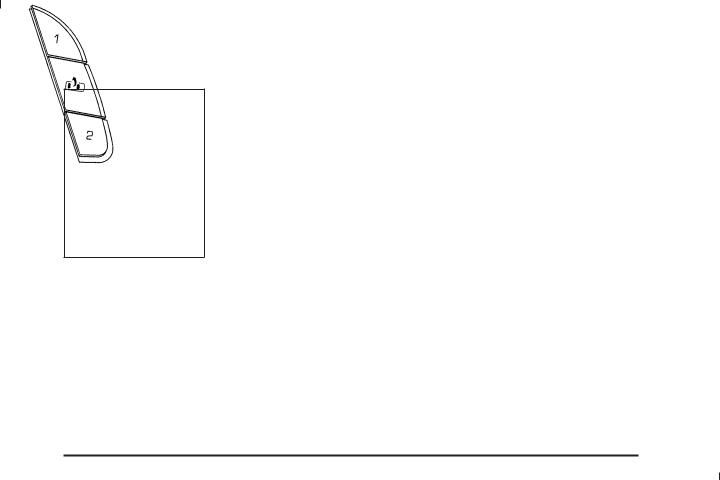
Memory Seat, Mirrors, and Pedals
Your vehicle may have the memory package.
The controls for this feature are located on the driver’s door panel, and are used to program and recall
memory settings for the driver’s seat, outside mirrors, and the adjustable throttle and brake pedal.
To save your positions in memory, do the following:
1.Adjust the driver’s seat, including the seatback recliner and lumbar, both outside mirrors, and the throttle and brake pedals to a comfortable position.
See Outside Power Mirrors on page 181 and Adjustable Throttle and Brake Pedal on page 143 for more information.
Not all mirrors will have the ability to save and recall their positions.
Not all adjustable throttles and brake pedals will have the ability to save and recall their positions.
2.Press and hold button 1 until two beeps are heard indicating that the position has been stored.
A second seating, mirror, and throttle and brake pedal position can be programmed by repeating the above steps and pressing button 2.
To recall the memory positions, the vehicle must be in PARK (P). Press and release either button 1 or button 2 corresponding to the desired driving position. The seat, outside mirrors, and adjustable throttle and brake pedals will move to the position previously stored. You will hear a single beep.
If you use the remote keyless entry transmitter to enter your vehicle and the remote recall memory feature is on, automatic seat, adjustable mirror, and adjustable pedal movements will occur.
See “MEMORY SEAT RECALL” under DIC Vehicle Customization (With DIC Buttons) on page 295
for more information.
13

To stop recall movement of the memory function at any time, press one of the power seat controls, memory buttons, power mirror buttons, or adjustable pedal switch.
If something has blocked the driver’s seat and/or the adjustable pedals while recalling a memory position, the driver’s seat and/or the adjustable pedals recall may stop working. If this happens, remove the obstruction and press the appropriate control for the area that is not responding for two seconds. Try recalling the memory position
again by pressing the appropriate memory button. If the memory position is still not recalling, see your dealer for service.
Easy Exit Seat
The control for this feature is located on the driver’s door panel between buttons 1 and 2.
With the vehicle in PARK (P), the driver’s seat exit position can be recalled by pressing the exit button. You will hear a single beep, and the driver’s seat will move back.
If the easy exit seat feature is programmed in the Driver Information Center (DIC), automatic
seat movement will occur when the key is removed from the ignition. See “EASY EXIT SEAT” under
DIC Vehicle Customization (With DIC Buttons) on page 295 for more information.
The memory seat and easy exit features can also be programmed using the DIC.
For programming information, see DIC Vehicle Customization (With DIC Buttons) on page 295.
14

Reclining Seatbacks
Manual Reclining Seatbacks
{CAUTION:
You can lose control of the vehicle if you try to adjust a manual driver’s seat while the vehicle is moving. The sudden movement could startle and confuse you, or make you push a pedal when you do not want to. Adjust the driver’s seat only when the vehicle is not moving.
{CAUTION:
If the seatback is not locked, it could move forward in a sudden stop or crash. That could cause injury to the person sitting there. Always push and pull on the seatback to be sure it is locked.
If the seats have manual reclining seatbacks, the lever used to operate them is located on the outboard side of the seat(s).
To recline the seatback, do the following:
1.Lift the recline lever.
2.Move the seatback to the desired position, then release the lever to lock the seatback in place.
3.Push and pull on the seatback to make sure it is locked.
15
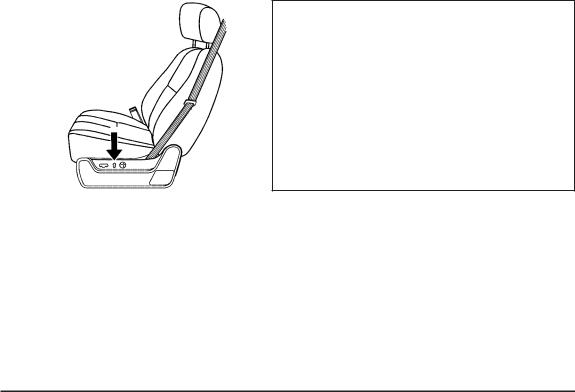
To return the seatback to an upright position, do the following:
1.Lift the lever fully without applying pressure to the seatback and the seatback will return to the upright position.
2.Push and pull on the seatback to make sure it is locked.
Power Reclining Seatbacks
If the seats have power reclining seatbacks, the control used to recline them is located on the outboard side of the seat behind the power seat control.
•To recline the seatback, tilt the top of the control rearward.
•To bring the seatback forward, tilt the top of the control forward.
16
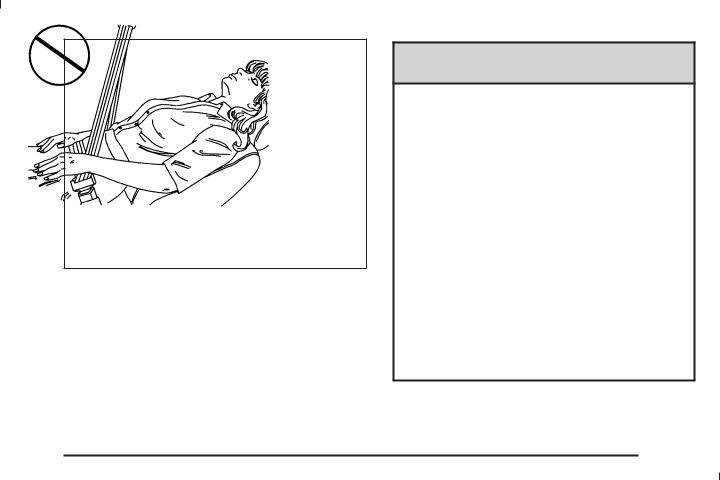
{CAUTION:
Sitting in a reclined position when your vehicle is in motion can be dangerous. Even if you buckle up, your safety belts cannot do their job when you are reclined like this.
The shoulder belt cannot do its job. In a crash, you could go into it, receiving neck or other injuries.
The lap belt cannot do its job either. In a crash the belt could go up over your abdomen. The belt forces would be there, not at your pelvic bones. This could cause serious internal injuries.
For proper protection when the vehicle is in motion, have the seatback upright. Then sit well back in the seat and wear your safety belt properly.
Do not have a seatback reclined if your vehicle is moving.
17
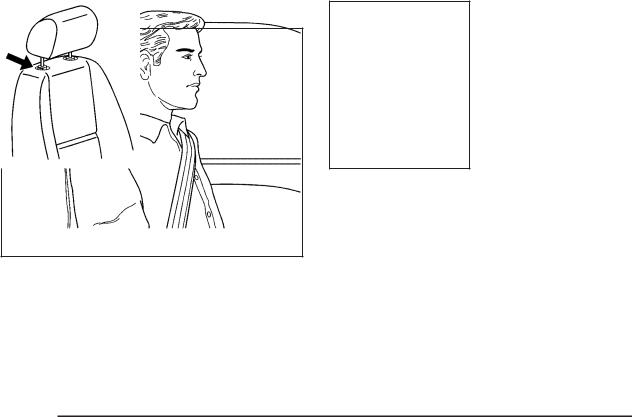
Head Restraints
Adjust the head restraint so that the top of the restraint is at the same height as the top of the occupant’s head. This position reduces the chance of a neck injury in a crash.
Pull the head restraint up to raise it. To lower the head restraint, press the release button, located on the top of the seatback, while you push the head restraint down.
The second row seats have head rests that can be adjusted up and down.
18
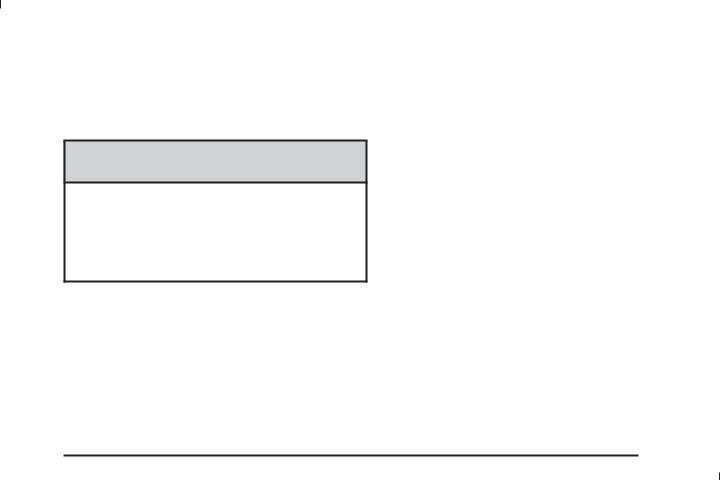
Seatback Latches
The front seatbacks tilt forward to allow access to the rear of the cab.
To tilt the seatback forward, lift the lever located on the outboard side of the seat cushion.
{CAUTION:
If the seatback is not locked, it could move forward in a sudden stop or crash. That could cause injury to the person sitting there. Always push and pull on the seatback to be sure it is locked.
To return the seatback to the upright position, push the seatback rearward until it latches.
After returning the seatback to its upright position, push and pull on the seatback to make sure it
is locked.
Center Seat
Your vehicle may have a front center seat. The seatback doubles as an armrest and cupholder/storage area for the driver and passenger when the center seat is not used. Do not use it as a seating position when the seatback is folded down.
For information on safety belts for this position, see Center Front Passenger Position (Regular Cab) on page 37 or Center Front Passenger Position (Crew and Extended Cab) on page 38.
19

Rear Seats
Rear Seat Operation (Full Bench)
Folding the Rear Seat
To fold the seat up, do the following:
Notice: Folding a rear seat with the safety belts still fastened may cause damage to the seat or the safety belts. Always unbuckle
the safety belts and return them to their normal stowed position before folding a rear seat.
1. Pull up on the front of the seat cushion while pulling
down on the release strap, located
under the seat cushion.
2.Pull the seat cushion up until it latches with the seatback.
3.After latching the seat cushion up, pull forward on it to make sure it is locked.
To fold the seat down, do the following:
1.Push the seat cushion rearward while pulling the release strap, located under the seat cushion. Pull the seat cushion down until
it latches.
2.After latching the seat cushion, pull up on it to make sure it is locked.
20

Rear Seat Operation (Split Bench)
Folding Rear Seat
On a vehicle with a second row 60/40 split seat either side of the rear seat may be folded for added cargo space.
Notice: Folding a rear seat with the safety belts still fastened may cause damage to the seat or the safety belts. Always unbuckle
the safety belts and return them to their normal stowed position before folding a rear seat.
Make sure that nothing is on the seat.
To fold the seat, slowly pull the seat cushion up.
To return the seat to the normal seating position, slowly pull the seat cushion down.
{CAUTION:
A safety belt that is improperly routed, not properly attached, or twisted will not provide the protection needed in a crash. The person wearing the belt could be seriously injured. After raising the rear seatback, always check to be sure that the safety belts are properly routed and attached, and are not twisted.
Make sure that the safety belt buckles on the driver’s side seatback are accessible to the outboard and center occupant and are not under the seat cushions.
21

Safety Belts
Safety Belts: They Are for Everyone
This part of the manual tells you how to use safety belts properly. It also tells you some things you should not do with safety belts.
{CAUTION:
It is extremely dangerous to ride in a cargo area, inside or outside of a vehicle. This includes riding on the tailgate, even when the vehicle is operated at low speeds. In a collision, people riding in these areas are more likely to be seriously injured or killed. People riding on the tailgate can easily lose their balance and fall in response to vehicle maneuvers. Falling from a moving vehicle may result in serious injuries or death.
CAUTION: (Continued)
CAUTION: (Continued)
Do not allow people to ride in, or on, any area of your vehicle that is not equipped with seats and safety belts. Be sure everyone in your vehicle is in a seat and using a safety belt properly.
{CAUTION:
It is extremely dangerous to ride in a cargo area, inside or outside of a vehicle. In a collision, people riding in these areas are more likely to be seriously injured or killed. Do not allow people to ride in any area of your vehicle that is not equipped with seats and safety belts. Be sure everyone in your vehicle is in a seat and using a safety belt properly.
22
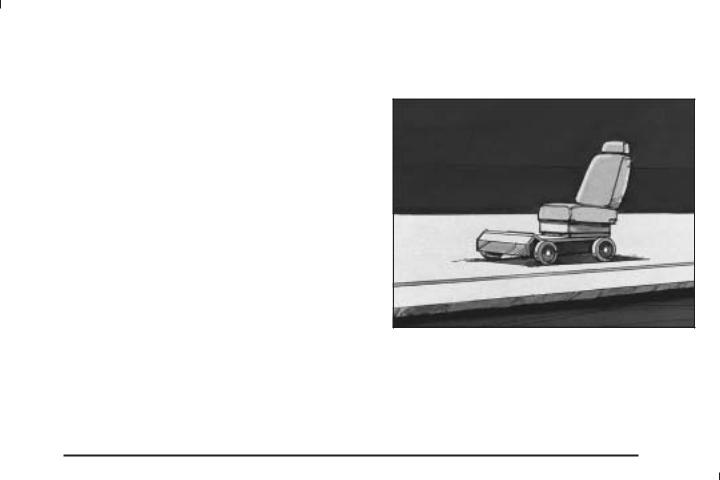
Your vehicle has indicators to remind you and your passengers to buckle your safety belts. See Safety Belt Reminder Light on page 255 and Passenger Safety Belt Reminder Light (1500 Series) on page 255.
In most states and in all Canadian provinces, the law says to wear safety belts. Here is why:
They work.
You never know if you will be in a crash.
If you do have a crash, you do not know if it will be a bad one.
A few crashes are mild, and some crashes can be so serious that even buckled up, a person would not survive. But most crashes are in between.
In many of them, people who buckle up can survive and sometimes walk away. Without belts they could have been badly hurt or killed.
After more than 40 years of safety belts in vehicles, the facts are clear. In most crashes buckling up does matter... a lot!
Why Safety Belts Work
When you ride in or on anything, you go as fast as it goes.
Take the simplest vehicle. Suppose it is just a seat on wheels.
23
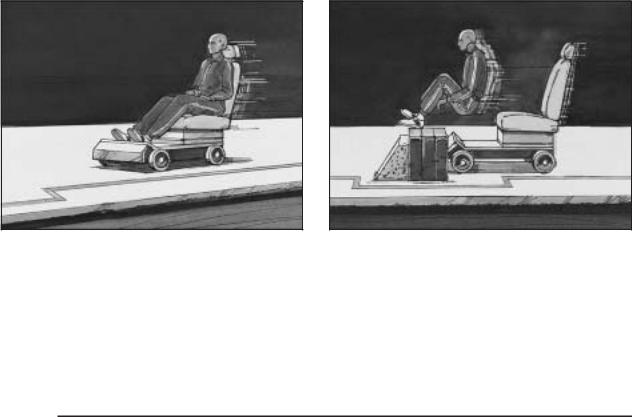
Put someone on it. |
Get it up to speed. Then stop the vehicle. |
|
The rider does not stop. |
24

The person keeps going until stopped by something. In a real vehicle, it could be the windshield...
or the instrument panel...
25

or the safety belts!
With safety belts, you slow down as the vehicle does. You get more time to stop. You stop over more distance, and your strongest bones take the forces. That is why safety belts
make such good sense.
Questions and Answers About
Safety Belts
Q:
A:
Q:
A: Airbags are supplemental systems only; so they work with safety belts — not instead of them. Every airbag system ever offered
for sale has required the use of safety belts. Even if you are in a vehicle that has airbags, you still have to buckle up to get the most protection. That is true not only in frontal collisions, but especially in side and other collisions.
26

Q: If I am a good driver, and I never drive far from home, why should I wear safety belts?
A: You may be an excellent driver, but if you are in an accident — even one that is not your fault — you and your passengers can be hurt. Being a good driver does not protect you from things beyond your control, such as
bad drivers.
Most accidents occur within 25 miles (40 km) of home. And the greatest number of serious injuries and deaths occur at speeds of less than 40 mph (65 km/h).
Safety belts are for everyone.
How to Wear Safety Belts Properly
This part is only for people of adult size.
Be aware that there are special things to know about safety belts and children. And there are different rules for smaller children and babies.
If a child will be riding in your vehicle, see Older Children on page 46 or Infants and Young Children on page 49. Follow those rules for everyone’s protection.
First, you will want to know which restraint systems your vehicle has.
We will start with the driver position.
27

Driver Position
Lap-Shoulder Belt
The driver has a lap-shoulder belt. Here is how to wear it properly.
1.Close and lock the door.
2.Adjust the seat so you can sit up straight. To see how, see “Seats” in the Index.
3.Pick up the latch plate and pull the belt across you. Do not let it get twisted.
The lap-shoulder belt may lock if you pull the belt across you very quickly. If this happens, let the belt go back slightly to unlock it.
Then pull the belt across you more slowly.
4.Push the latch plate into the buckle until it clicks.
Pull up on the latch plate to make sure it is secure. If the belt is not long enough,
see Safety Belt Extender on page 45.
Make sure the release button on the buckle is positioned so you would be able to unbuckle the safety belt quickly if you ever had to.
5.Move the shoulder belt height adjuster to the height that is right for you. Improper shoulder belt height adjustment could reduce the effectiveness of the safety belt in a crash. See Shoulder Belt Height Adjustment
on page 35.
28
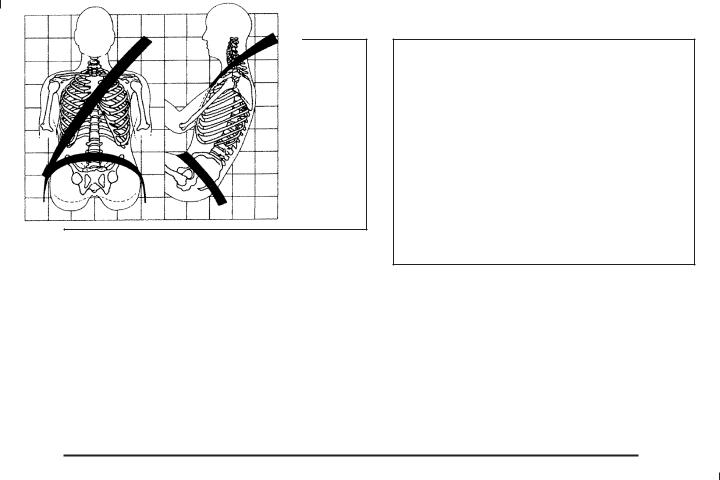
6.To make the lap part tight, pull up on the shoulder belt.
It may be necessary to pull stitching on the safety belt through the latch plate to fully tighten the lap belt on smaller occupants.
The lap part of the belt should be worn low and snug on the hips, just touching the thighs. In a crash, this applies force to the strong pelvic bones. And you would be less likely to slide under the lap belt. If you slid under it, the belt would apply force at your abdomen. This could cause serious or even fatal injuries. The shoulder belt should go over the shoulder and across the chest. These parts of the body are best able to take belt restraining forces.
The safety belt locks if there is a sudden stop or crash.
29
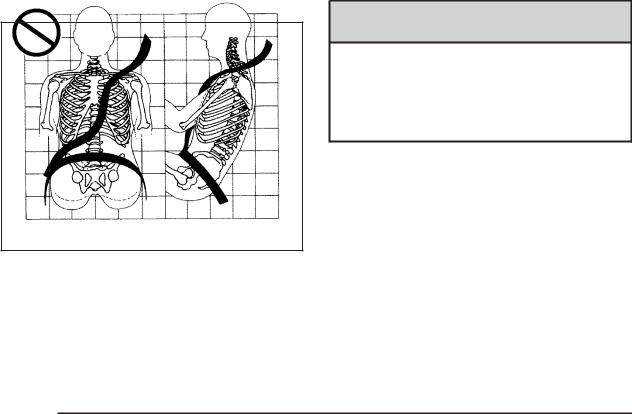
Q: What is wrong with this?
A: The shoulder belt is too loose. It will not give nearly as much protection this way.
{CAUTION:
You can be seriously hurt if your shoulder belt is too loose. In a crash, you would move forward too much, which could increase injury. The shoulder belt should fit against your body.
30
